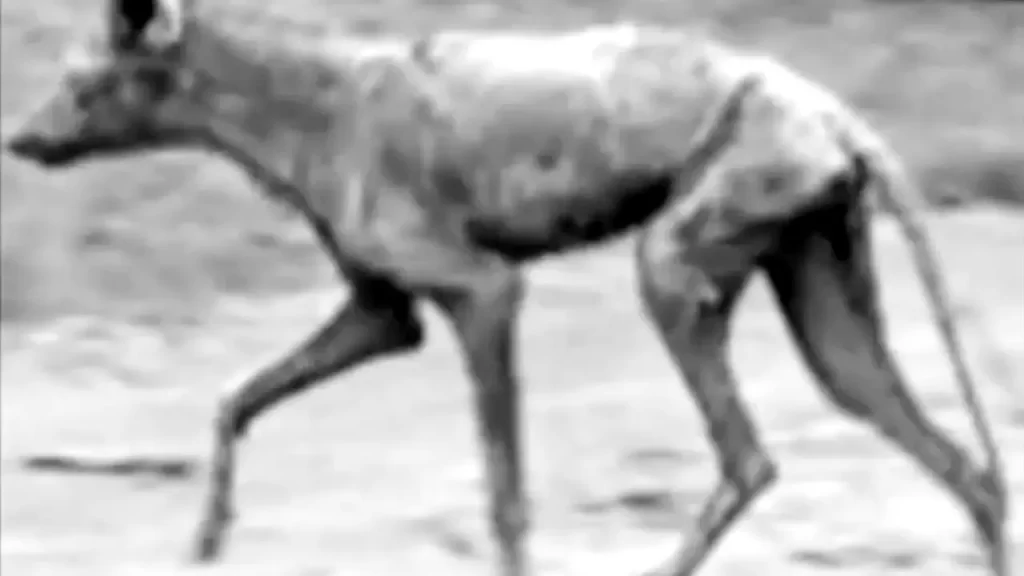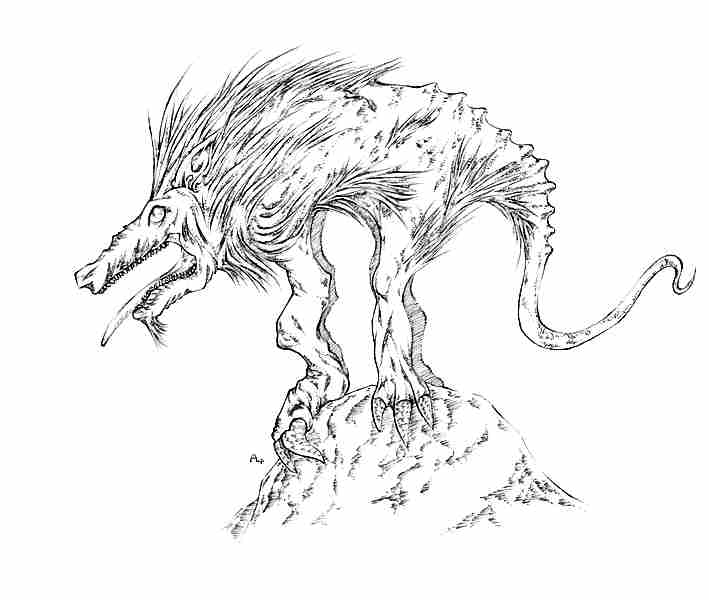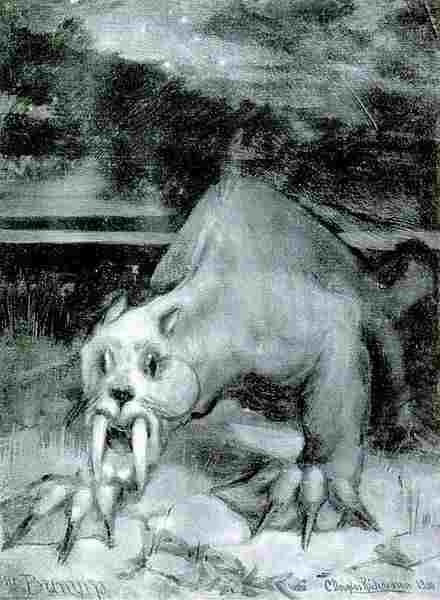The Mysterious Chupacabra-Uncovering the Folklore and Legends
If you’ve heard rumors about the Chupacabra, you might wonder what the fuss is about. This mysterious creature, which many believe only lives in our thoughts, has a lengthy and interesting history that deserves to be explored. Let’s take a step-by-step journey into the world of the Chupacabra and reveal the cryptid’s mysteries.
The Chupacabra, which translates to “goat sucker” in Spanish, is a mythological monster claimed to inhabit portions of the Americas. The name is derived from its alleged propensity to attack and suck the blood of animals, particularly goats. In the mid-1990s, the first sightings were recorded in Puerto Rico.
The tradition, however, has subsequently spread to many other countries, including Mexico and the United States.
Despite multiple sightings and stories, there needs to be more convincing evidence that this creature exists. There has never been a capture or killing of a creature matching the description (Except for few findings which were not yet proven scientifically).
Instead, most scientists believe the Chupacabra is a mythical monster known as a cryptid. Cryptids are creatures whose existence or survival to the current day is contested or unconfirmed; Bigfoot and the Loch Ness Monster are two examples.

So, what is the origin of the Chupacabra legend? One explanation might be our inherent obsession with the unknown. We enjoy a good mystery, and the Chupacabra surely delivers. Its elusive nature adds to its appeal, making it a popular subject of folk tales and horror fiction.
Another reason might be that the Chupacabra explains mysterious livestock death rates conveniently. Farmers who discover their livestock bloodless and with weird wounds might blame the Chupacabra rather than dealing with more direct evidence, such as sickness or predators.
While this animal may not be biologically accurate, its influence on popular culture is evident. It has inspired several books, films, and television series. It’s also a well-known character in video games and online memes. However, the Chupacabra is more than simply a legendary creature for many people; it represents the unknown and unexplainable in our world.
What Does Chupacabra Eat?
The Chupacabra, according to legend, primarily feeds on the blood of livestock. The name “Chupacabra” itself translates to “goat sucker” in Spanish, a name the creature earned due to the many tales of it draining goats of their blood.
These nocturnal attacks often leave animals, particularly goats, sheep, and chickens, deceased with distinct puncture wounds and seemingly drained of blood.
However, it is important to highlight that this is a creature of legend and fiction, with no conclusive scientific proof supporting its existence. Furthermore, the causes of cattle deaths attributed to the Chupacabra are frequently more routine, such as predation by recognized wildlife or sickness.
The Appearance of the Creature
There is no simple solution to this issue because descriptions of this species differ significantly. Some describe it as a large, hefty beast the size of a small bear, with a row of spines running from the neck down to the base of the tail.
Others describe it as a reptile-like creature with greenish-gray leathery or scaly skin and sharp spines or quills running down its back. In addition, it is reported to have huge, red eyes that mesmerize and paralyze its prey.
It was originally described as a bipedal beast towering 3-4 feet tall in this location. It was described as having enormous, almond-shaped eyes that blazed red with a reptile look.
Its physique was described as robust, with short grey hair covering its body and a line of spines or quills going from its neck to the base of its tail. This form was frequently characterized as hopping like a kangaroo instead of sprinting like a mammal.

Later reports, particularly in the southern United States, characterize the creature as a strange wild canine. This animal resembles a hairless dog or coyote and is frequently plagued with mange, a skin ailment that causes hair loss and the creation of sores. Chupacabras are quadrupedal, meaning they move on all fours, with a row of spines or a ridge of coarse hair running down their backs.
The First Sighting
The first sighting of the Chupacabra was in Puerto Rico in 1995. The initial report came from a woman named Madelyne Tolentino in the town of Canóvanas. She claimed to have seen a bipedal entity with spiky dorsal features, huge, captivating eyes, and a reptile appearance through her window.
Tolentino’s comprehensive description quickly drew the attention of local and worldwide media, giving rise to the Chupacabra mythology. Her experience coincided with a spate of strange livestock deaths in Puerto Rico when animals were discovered with two punctured wounds and drained of blood.
These occurrences were promptly attributed to the newly titled Chupacabra, further solidifying the creature’s blood-sucking reputation.
The Chupacabra mythology spread quickly, spurred by further sightings from Mexico through the southern United States and as far south as Chile. However, despite numerous sightings and stories, no convincing physical evidence, such as a carcass or a living specimen, has ever been discovered to establish the existence of the Chupacabra as a distinct entity.
Many reported Chupacabras turned determined to be recognized animals suffering from sickness or malnourishment, prompting most experts to dismiss this creature as a mythical creature.
Eyewitnesses of Chupacabra
Since Madelyne Tolentino’s first sighting of the Chupacabra in Puerto Rico in 1995, countless accounts of encounters with the creature have existed. Here are several in-depth reports:
Madelyne Tolentino: The first person to record the animal sighting, Tolentino offered a thorough account that helped form the creature’s image in popular culture. She described it as three to four feet tall with an alien or reptile look.
It had enormous, red, captivating eyes, a row of spines along its back, and a strange, hopping movement. She further stated that the monster had kangaroo-like legs, clawed hands, and a fang-filled mouth.

Canion, Phylis (Cuero, Texas, 2007): reported to have discovered the remains of an unknown species on the road near her property. According to her description, it was a hairless, dog-like creature with a noticeable overbite and a row of spines on its back. Canion preserved the creature’s head, and DNA testing revealed it was a hybrid wolf-coyote. However, this did not deter residents from suspecting it was a Chupacabra.
Jose Miguel Agosto (Canóvanas, Puerto Rico, 1995): Agosto reported discovering eight sheep dead, each with three puncture wounds in the chest and entirely drained of blood, a few months after Tolentino’s encounter. Agosto claimed to have witnessed a Chupacabra escape the scene, describing it as a tiny, hefty monster with spines along its back that ran on two legs before flying away.
The De Jesus Family (Guaica, Puerto Rico, 1995): A few days after the first encounter, a family in Guaica claimed being terrified by a Chupacabra. They described it as a little, hairless monster with brilliant eyes, long claws, and wings that moved on two legs. The monster allegedly entered their bedroom through a window, leaving a puddle of slime and a chunk of putrid meat behind.
How Can You Survive a Chupacabra Attack
The best defense is to avoid: Because this creature is known to be nocturnal, remaining indoors at night may be a wise approach, especially if you live in an area where sightings have occurred.
Secure Your Livestock: Because this creature is said to feed on the blood of livestock, particularly goats, keep your animals securely fenced at night. Solid fences and locks help to keep your animals secure.
Light It Up: Night creatures are reported to hate bright light. So, keeping your surroundings well-lit may prevent a Chupacabra.
Keep Calm: According to most stories, this monster prefers cattle to people. So, if you come across what you assume to be a Chupacabra, keep a safe distance, and it should go about its business.
Sightings should be reported to local wildlife officials if you believe you have seen a Chupacabra. Unfortunately, it’s likely a mistake. A known animal needs assistance.

Knowledge is Power: Educate yourself on the wildlife in your neighborhood. Many Chupacabra sightings are coyotes, dogs, or other animals suffering from mange, a skin ailment that causes hair loss and causes familiar animals to appear weird.
Scientific Explanation About the Animal
This creature is considered a creature of folklore rather than a recognized species by scientists. The Chupacabra’s traits and activities are frequently explained in much simpler terms. Here are a few scientific theories on Chupacabra sightings:
Animal Misidentification: Many alleged Chupacabra sightings have become known species. This includes dogs, coyotes, foxes, and raccoons, among others. However, these animals can sometimes appear unusual due to age, injury, or disease, leading to misidentification.
Mange: Mange is a skin illness caused by mites that causes significant hair loss and blisters. Mange-infested animals, such as coyotes or dogs, might seem unusual, prompting humans to misidentify them as mythological creatures. However, many allegedly Chupacabra carcasses are coyotes with severe mange.
Predation and scavenging: The Chupacabra is sometimes blamed for mysterious livestock deaths, where animals are discovered with puncture wounds and blood drained. These killings, however, are more likely the consequence of recognized predators or scavengers. In addition, the ‘blood-draining’ element might exaggerate or misinterpret typical breakdown processes.
Humans are pattern-seeking animals, according to psychology and folklore. When presented with something weird or unexplainable, we frequently use myths and legends to help us understand it.
The Chupacabra, like many fabled monsters, maybe a psychological reaction to the unknown. It’s also worth mentioning that the mythology of this creature has expanded in tandem with the emergence of the internet and the quick exchange of information (and disinformation) that it allows.
Only when the scientific community produces and validates actual proof, such as a corpse or a living specimen, the Chupacabra will most likely be categorized as a cryptid – a species whose existence is hypothesized but not proven.
Conclusion
Finally, the Chupacabra, a mythology and folklore monster, continues attracting and enchanting people worldwide. Its reputation as a livestock predator and many reports of its appearance, ranging from a reptile beast to a hairless canine monster, have fed its legend, propelling it to the forefront of cryptid history.
While eyewitness tales provide comprehensive and often disturbing details, the Chupacabra remains firmly in the realm of urban legend and myth due to a lack of substantial scientific proof.
Moreover, many recorded sightings are most likely misidentifications of known animals, particularly those suffering from illnesses like mange that change their look dramatically.
The creature exemplifies our curiosity and our persistent fascination with the unexplainable. It symbolizes the mysteries that continue to exist in our world, exciting our imaginations and prompting us to wonder what could be hiding just outside the borders of known science.
This monster, whether real or imagined, is a strong reminder of the complexities of nature, the possible gaps in our understanding of it, and the fascinating power of a good narrative. As we continue to explore our universe and seek solutions to its many mysteries, the mythology of the Chupacabra, a gripping tale of the unknown and beyond comprehension, will most certainly live on.
Sources
https://www.fws.gov/story/2021-07/animals-birds-and-chupacabras







